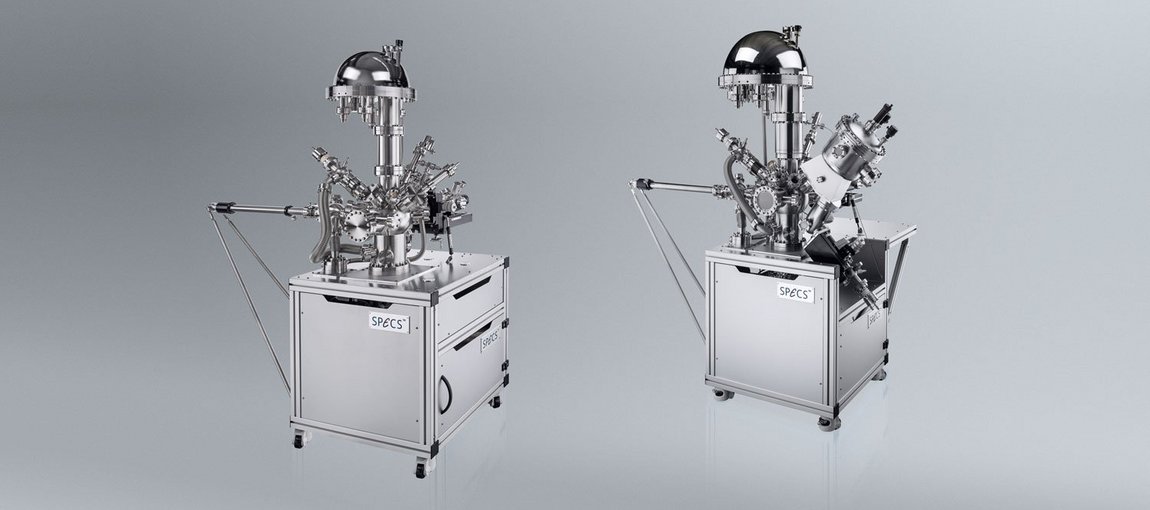FlexMod
FlexMod is a series of specialized building-block type modules, that can be combined with each other or existing systems can later on be extended. There are well defined modules for XPS (FlexPS), SPM (FlexPM), Preparation (FlexPrep) and sample introduction (FlexIntro). The frames and baking tents standardized regarding shape, size and height. System automation can be offered optionally.
All customized FlexMod SPECS systems are designed and manufactured at the SPECS headquarter in Berlin. A special engineering group personally accompanies the system process from the order placing until the final acceptance. Our engineers are dedicated to highest quality and usability of the system during design, testing and setup on site. Once the system is in full operation a professional service team in our HQ and our worldwide branch offices takes care of a smooth and stable operation.
The FlexMod system modules is a modular concept combining various building blocks of surface science analysis solutions into one system. Using this concept, scientists can concentrate on scientific problem solutions, instead of diving into the small details of complicated system designs.The user can start from well-planned, well-specified and application-optimized building block type modules for a dedicated task. With all modules having equal form factors, immediate or later combination of several of these optimized modules help to build-up a multi-method system, exactly optimized to the recent application and in future even growing with extended tasks.
